Judi Lynn
Judi Lynn's JournalPanama denies refugee status to Colombiaís fugitive former spy chief
Panama denies refugee status to Colombia’s fugitive former spy chief
Jan 13, 2015 posted by Adriaan Alsema
Colombia’s former spy chief can no longer count on the protection of the Panamanian government after its decision to not grant asylum to the disgraced former official accused of spying against presumed political enemies of former President Alvaro Uribe.
The director of Panama’s refugee agency told local newspaper La Prensa that Maria del Pilar Hurtado, the former director of the now-defunct Colombian intelligence agency DAS, had filed a second request for political asylum late last year, and that this request had been denied by the Panamanian government.
Hurtado fled Colombia in 2010 before being charged for multiple alleged crimes after judicial investigators found out that the DAS had carried out illegal spying operations against the Supreme Court, politicians, journalists and human rights workers.
The disgraced was one of numerous top officials, including Uribe’s former chief of staff, who were charged with abuse of power, conspiracy, the illegal use of communications equipment and fraud.
Hurtado was initially granted asylum by the administration of former Panamanian President Ricardo Martinelli, reportedly a personal friend of Uribe.
More:
http://colombiareports.co/panama-rejects-asylum-colombias-fugitive-former-spy-chief/
Peru planning 'second Machu Picchu' in Chachapoya
12 Jan 2015
Peru planning 'second Machu Picchu' in Chachapoya
BY Tom Anstey
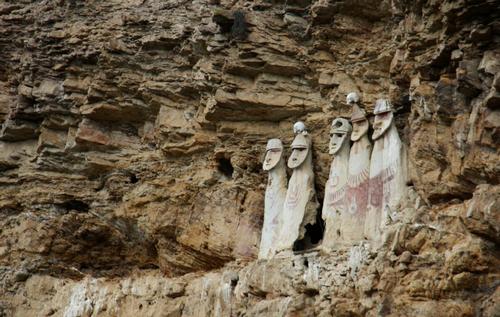
[font size=1]
Chachapoya remains largely unexplored due to a lack of easy access and awareness
photo: Flickr.com/worldsurfr
[/font]
Peruvian officials are planning to create a historical site to rival that of Machu Picchu, in the form of one of its best kept secrets – the Chachapoya ruins of the northern “cloud people”.
While Machu Picchu has been on the tourist map for virtually every visitor to Peru, Chachapoya is largely unexplored by most foreigners, save some adventurous backpackers. But the government plans to change that and ease traffic off its crown jewel of Machu Picchu – which has been at risk from increased footfall – and increase traffic to the northern Amazonas region of the country.
In the government plan, a cultural heritage site known as Kuelap will act as the centrepiece of a “second Machu Picchu”, with use of surrounding sites including Sipan, Chan Chan, Leymebamba, and Gran Pajaten, which all date back to the 9th century.
Such sites remain largely unexplored due to inaccessibility and lack of general awareness, but in the government’s plan a cable car system will be built to allow easy public access to the area, which sits on the top of a mountain ridge in a “cloud forest”.
“Kuelap could be a second Machu Picchu, easily,” said Peru’s President Ollanta Humala. “With Kuelap, we can create a tourist circuit that will be as competitive as the south.”
Set to open in 2016, the US$18m (US$15.2m, €12m) cable car system will have the capacity to transport 1,000 passengers per hour.
More:
http://www.leisuremanagement.co.uk/detail.cfm?pagetype=detail&subject=news&codeID=313381#sthash.XrnP964O.dpuf
[center]
(Artist's impression of Kuelap. Please see the link below for wonderful views of this site.)
https://www.google.com/search?sourceid=navclient&ie=UTF-8&rlz=1T4TSND_enUS566US566&q=Kuelap%20Peru&gws_rd=ssl&tbm=isch


Sipan
https://www.google.com/search?sourceid=navclient&ie=UTF-8&rlz=1T4TSND_enUS566US566&q=Sipan+Peru&gws_rd=ssl&tbm=isch

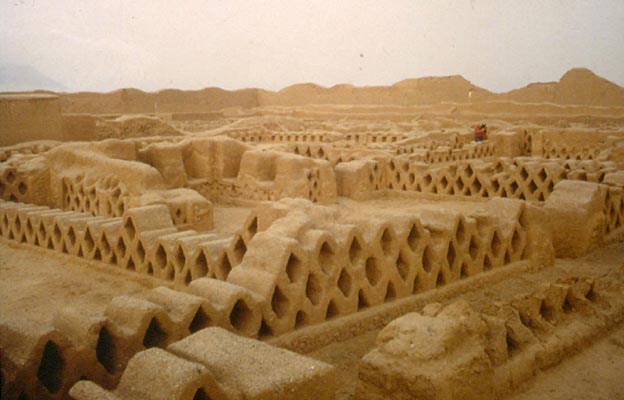
Chan Chan
https://www.google.com/search?sourceid=navclient&ie=UTF-8&rlz=1T4TSND_enUS566US566&q=chan+chan+Peru&gws_rd=ssl&tbm=isch

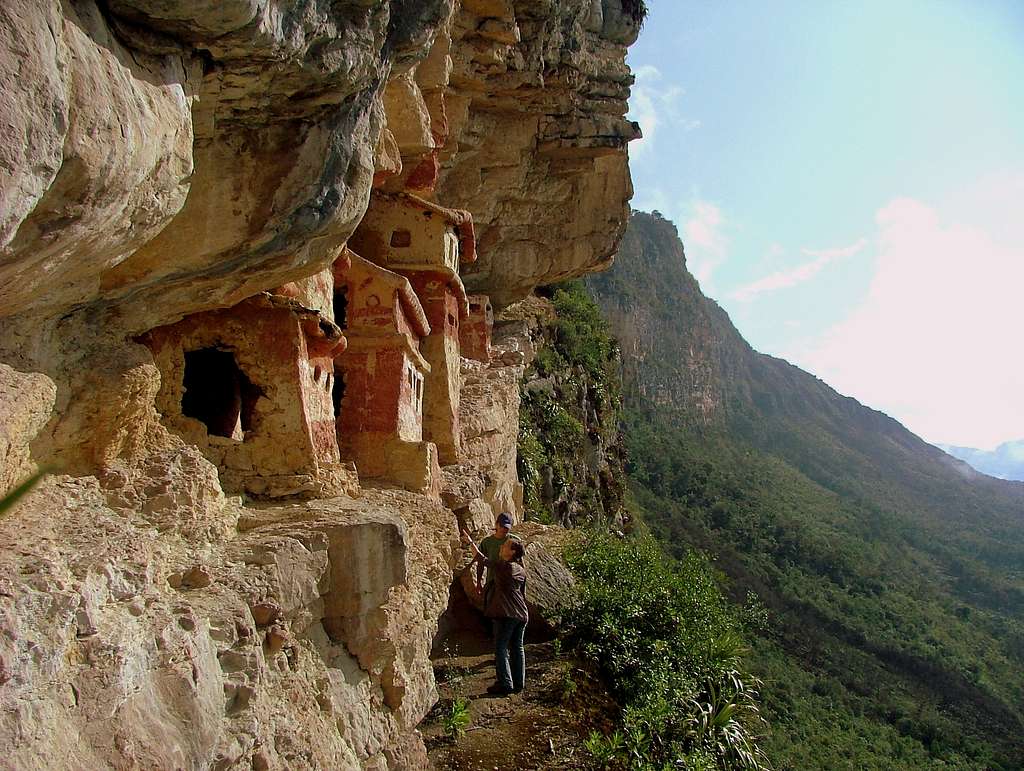

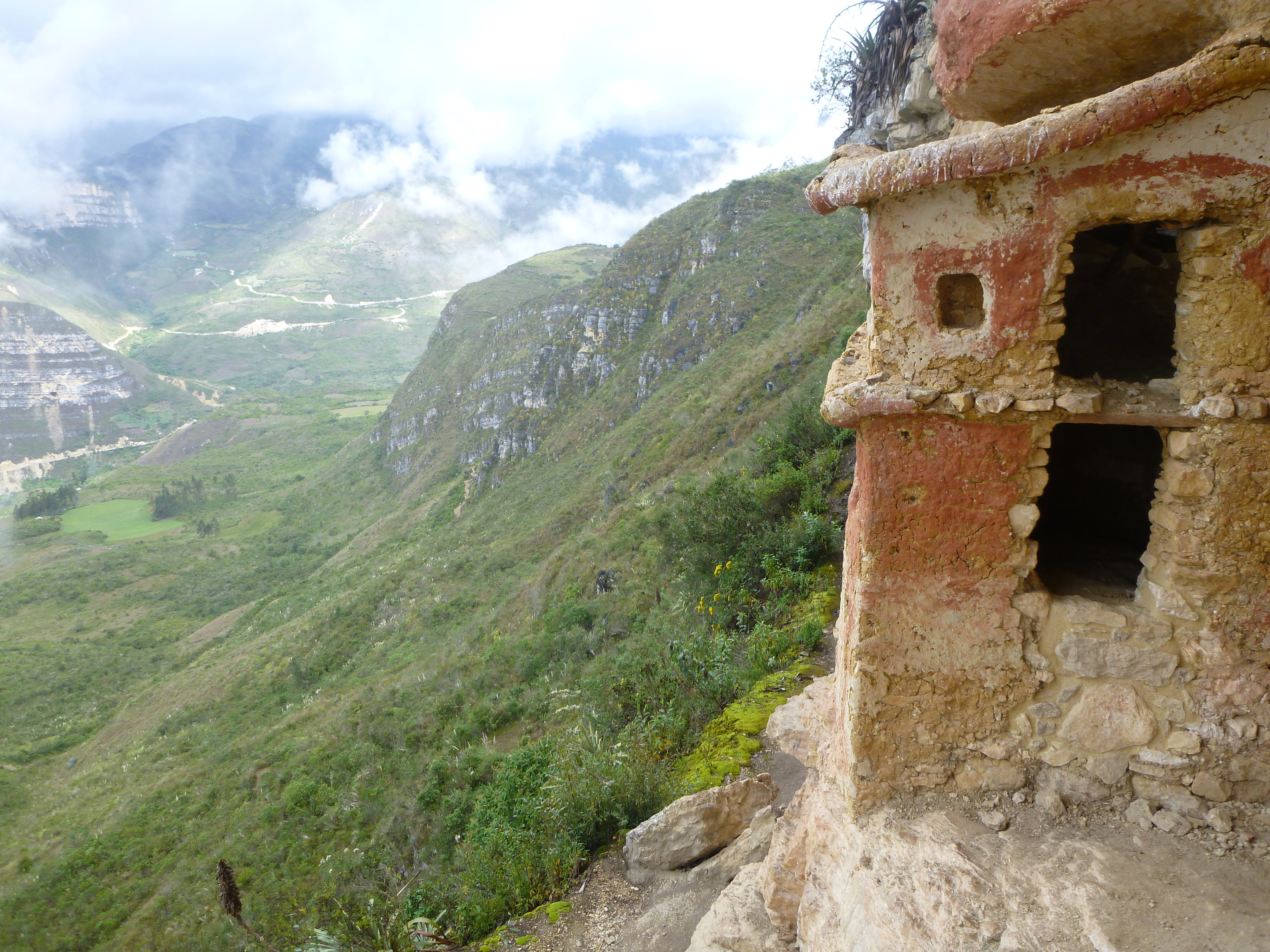
Leymebamba
https://www.google.com/search?sourceid=navclient&ie=UTF-8&rlz=1T4TSND_enUS566US566&q=Leymebamba+Peru&gws_rd=ssl&tbm=isch





http://4.bp.blogspot.com/-vHkVnONpwfM/UPWV8EZ9LkI/AAAAAAAAIWs/1TYl3oMF5cs/s1600/13B-Image+Gran+Pajaten+Wall.jpg
Gran Pajaten Peru
"a fortress in the clouds of Northern Peru"
https://www.google.com/search?sourceid=navclient&ie=UTF-8&rlz=1T4TSND_enUS566US566&q=Gran%20Pajaten%20Peru&gws_rd=ssl&tbm=isch[/center]
Unbelievable. There is SO much to learn. We need to live hundreds of years to find out what will be learned later from places like this!
Haiti protesters again rally to demand president's departure
Haiti protesters again rally to demand president's departure
By DAVID McFADDEN, Associated Press | January 10, 2015 | Updated: January 10, 2015 8:08pm
PORT-AU-PRINCE, Haiti (AP) — Protesters burned tires and threw rocks and glass bottles at riot police during another anti-government demonstration in Haiti's capital Saturday amid a bitter political stalemate over long-delayed elections.
The demonstration of mostly young men reached a peak of about 1,500 in downtown Port-au-Prince as protesters called for the departure of President Michel Martelly, who took office in May 2011 and is due to leave next year. Police fired tear gas and sprayed water from an armored vehicle, scattering the crowd at a plaza close to where the National Palace stood before it collapsed in Haiti's 2010 earthquake.
There has been no letup in raucous protests since last month's resignation of Martelly's prime minister, Laurent Lamothe, and other concessions aimed at resolving the stalemate holding up legislative elections. A presidential commission had called for Lamothe's resignation, among other steps, to resolve the gridlock that has sparked protests.
Riche Clebert, a snack vendor who did not participate in the demonstration, said he has grown exhausted with the cycle of political protests, which often end with violence near the old National Palace site.
"I have three children to feed and I have lost all patience with this. This is not leading our country anywhere," Clebert said as he clutched his tray of sugary breads and watched dozens of young men running from billowing clouds of tear gas.
After fleeing a blast from a water cannon, protester Jean Junior said Martelly had to go. "Haiti cannot continue like this because the population has not benefited from this government," he said.
More:
http://www.chron.com/news/world/article/Haiti-protesters-again-rally-to-demand-6006830.php
Tribes join effort to keep Yellowstone grizzlies protected
Tribes join effort to keep Yellowstone grizzlies protected
By MATTHEW BROWN, Associated Press | January 11, 2015 | Updated: January 11, 2015 2:31pm
BILLINGS, Mont. (AP) — Leaders of American Indian tribes in the Rocky Mountains and Great Plains have joined an effort to retain federal protections for grizzly bears in and around Yellowstone National Park.
The U.S. Fish and Wildlife Service is expected to decide this year whether it will move to lift protections for the roughly 1,000 grizzlies that scientists say live in the Yellowstone region of Montana, Idaho and Wyoming.
The campaign to enlist tribal backing for continued protections is being coordinated in large part by wildlife advocates. Organizers say more than two dozen tribes have signed on with resolutions and other declarations of support.
Tribal leaders cited their ancestral connection to the Yellowstone area and the cultural importance of grizzly bears to their people.
"Any move to delist the sacred grizzly bear on this ancestral landscape must involve consultation with the affected Tribal Nations," wrote Ivan Posey, a member of the Eastern Shoshone and chairman of the Montana Wyoming Tribal Leaders Council, in a letter last month.
More:
http://www.chron.com/news/science/article/Tribes-join-effort-to-keep-Yellowstone-grizzlies-6007939.php
Photographer captures rare ice halo phenomena in New Mexico
Photographer captures rare ice halo phenomena in New Mexico
The phenomenon comes from ice crystals in the atmosphere.
By Thor Benson | Jan. 10, 2015 at 5:51 PM

US National Weather Service Amarillo Texas
Government Organization · 30,612 Likes · Yesterday at 9:04am · Edited ·
..
Photo taken and provided by Joshua Thomas. Taken in Red River, NM the morning of January 9, 2015.
RED RIVER, N.M., Jan. 10 (UPI) -- A photographer from Texas, Joshua Thomas, recently captured a photo in New Mexico of a rare ice crystal halo phenomenon.
In order to point out the interesting details in the photo, the US National Weather Service of La Crosse, Wisconsin made the photo into a diagram that shows the different aspects of the halo.
The phenomenon occurs when minuscule ice crystals in the atmosphere reflect and refract light in a certain way. The halos can be created by light from the sun or the moon, and seeing one often means there will be some kind of precipitation within the following 24 hours.

http://www.upi.com/Science_News/2015/01/10/Photographer-captures-rare-ice-halo-phenomena-in-New-Mexico/8911420929196/?spt=sec&or=sn
Venezuela hands out 675,000 homes in 4 years
Venezuela hands out 675,000 homes in 4 years
By Staff Writers, teleSUR
Friday, Jan 9, 2015
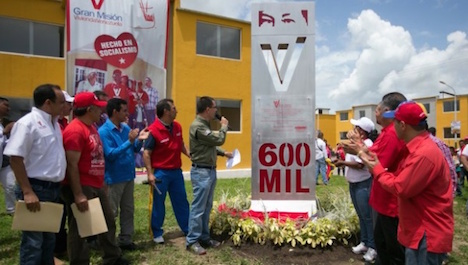
[font size=1]
The Great Housing Mission Venezuela (GMVV) turned in home number 600,000 in Hugo
Chavez's home town of Sabaneta, Barinas | Photo: AVN
[/font]
The government of Venezuela has built and handed out 675,991 homes in the last four years, Minister of Housing and Habitat Ricardo Molina confirmed Wednesday.
At the start of 2015, Venezuela handed over 700 apartments in different states to hundreds of families.
Upon his return following visits to Russia, China and with the member countries of Organization of the Petroleum Exporting Countries, President Nicolas Maduro will announce more of the government's strategies to continue the construction of homes as well as other government objectives this year.
The Great Venezuelan Housing Mission (GMVV) began in 2010 under the leadership of former President Hugo Chavez to provide homes for families affected and displaced by landslides from heavy rains. Since its introduction, the program expanded to resolve Venezuela's housing deficit.
Through the program, families are provided with the houses – equipped with all appliances and furniture – and the titles to the property free of cost.
More:
http://axisoflogic.com/artman/publish/Article_68951.shtml
Neoliberalismís Latin American Struggle
Weekend Edition January 9-11, 2015
What of the Rest of the World?
Neoliberalism’s Latin American Struggle
by ROBERT HUNZIKER
“For example, when we say that the Chilean state should become a true guarantor of material rights, that is certainly antithetical to the neoliberal capitalist vision which turns rights into a business to be regulated by the market,” — Camila Vallejo (former Chilean student protest leader) interview by Zoltán Glück at CUNY Graduate Center, Oct. 15, 2012.
Neoliberalism has been an “occupying force in Latin America” for over three decades while it has stripped the nation/state(s) of the functionality of a social contract, pushed through wholesale privatization of public enterprises, and expropriated the people’s rights to formal employment, health, and education, all of which are crowning glories for “free-market determinism.”
Throughout Latin America (as well as around the world), neoliberalism’s motif consists of assault on the state, in favor of the market, on politics, in favor of economics, and on political parties, in favor of corporations. Singularly, neoliberalism brings in its wake a “corporate state.”
Henceforth, the corporate state, shaped and formed by neoliberal principles, pushes the social contract backwards in time to the age of feudalism, a socio-economic pyramid with all of the wealth and influence at the pinnacle, but, over time, like an anvil balanced on balsa wood.
Albeit, the Left, with renewed vigor, has pushed back against neoliberalism’s robbing the poor to enrich the rich. And, there are clear signals that this pushback has gained traction throughout Latin America.
More:
http://www.counterpunch.org/2015/01/09/neoliberalisms-latin-american-struggle/
Democracy in Cuba and at Home
Weekend Edition January 9-11, 2015
A Review of Arnold August's "Cuba and Its Neighbors" (Part One)
Democracy in Cuba and at Home
by MAXIMILIAN C. FORTE
Arnold August’s Cuba and Its Neighbours: Democracy in Motion is a richly documented and thus very detailed description and analysis of the history, theory, and practice of democracy in Cuba. Based on several years of participant observation in Cuba, in addition to numerous research trips since 1991, Cuba and its Neighbours provides a close-up view of the Cuban process of democratization, primarily focusing on the past decade. This work builds on his first book on Cuba, Democracy in Cuba and the 1997-98 Elections (Havana: Editorial José Martí, 1999), which was based on participant observation during the elections spanning 1997-1998 and focused on the electoral process. In the 2013 book under review here, August focuses on the forms of direct democracy and popular power that exist in Cuba today, the role of mass organizations, the National Assembly, the Communist Party, and the history of Cuban constitutions, set in a wider regional comparative framework that also includes discussion of democracy in Venezuela, Bolivia, Ecuador, and the US. It is a “must read” especially if you have been trained to accept the orthodox dogma that Cuba is merely a “dictatorship,” a “tyranny” that is exclusively dominated by “the Castro brothers”. August’s book does great justice to the complexity and historical development of Cuban democracy, and no discussion on that subject should proceed if one has not first read this book.
August’s interests in this area go back at least four decades, to when he was a political science student in Montreal in the late 1960s. He was part of a movement to “open the curriculum,” to include “new approaches to the South that did not encompass only theories and analyses based on the racist assumption of innate superiority that dominated academia in the North at the time” (and still today). (August, 2013, p. xiii). His aim in this book is to broaden our understanding of democracy, our understanding of Cuba, and of democracy in Cuba. He does so by bringing to light what is too often ignored, the development of a “grass-roots and revolutionary political culture” (August, 2013, p. xv). His ethnographic work involved living in Cuba for a period that spanned years, participant observation in elections, attendance in municipal assemblies and at the National Assembly, participating in meetings of the Workers’ Central Union of Cuba (CTC), and dozens of interviews with National Assembly delegates, professors, journalists, and trade unionists, among others.
What follows immediately below is a summary and overview of the text as a whole. In part 2 of this review essay, August’s book is placed within a much broader discussion on plural and diverse understandings of democracy, on democracy and political anthropology, and comes back home to discuss the nature of our democracy, at the elite level and in the everyday.
Chapter 1, “Democracy and U.S.-Centrism,” brings to the fore the question of different types of democracy, and he warns against Eurocentric misconceptions surrounding the concept of democracy (August, 2013, p. 2). His argument is that “democracy” cannot be discussed without taking into account the social and economic system in which it takes place (p. 3). Interested in alternatives, he begins by considering socialist systems compared to capitalist ones. With reference to socialist systems, he argues that though they meet a political definition of democracy by constructing collective ownership of resources, either directly or via the state, that does not automatically translate into a real and effective distribution of power. For that to occur, what is needed is participatory democracy, “the people’s ongoing daily involvement in the political and economic affairs of the country” (p. 4). He also prefers to speak of “democratization” rather than “democracy”: democratization “stresses democracy as a progression, constantly in motion. ‘Democracy’ as an abstraction tends to be fixed in time, restrained by predetermined structures and often without any socio-economic content” (p. 5). In challenging Eurocentric conceptions of democracy and politics, enshrined in the modern disciplines created in the West in the late nineteenth-century, August instead directs our attention to the political understanding of Cubanía, of Cubans thinking for themselves–“Cubanía means…putting things Cuban on the agenda” (p. 9). He also shows throughout his book that the Cuban revolutionary system possesses its own originality–it is not some copy of an imported ideology or system.
More:
http://www.counterpunch.org/2015/01/09/democracy-in-cuba-and-at-home/
When the United States Government Broke Relations with Cuba
January 08, 2015
The History Obama Neglected to Mention
When the United States Government Broke Relations with Cuba
by NELSON P. VALDÉS and ROBERT SANDELS
Esto es muerte o vida, y no cabe errar.
This is life or death, and we cannot err.
– José Martí, Letter to Manuel Mercado, May 18, 1895 (one day before Marti’s death)
President Obama’s announcement Dec. 17 that the United States would resume diplomatic relations with Cuba, did not include an explanation of what went wrong half a century ago….
The Cuban revolutionaries took power Jan. 1, 1959, overthrowing Fulgencio Batista, a close ally of the U.S. government. The Republican administration of President Dwight Eisenhower made numerous efforts to stop the revolutionists even before they seized power. A conservative administration confronted with a growing civil rights movement at home and an anti-colonial struggle throughout the Third World certainly did not feel comfortable with Fidel Castro and his “barbudos.”
As soon as the revolution took power, the U.S. government gave refuge and support to Cuban counterrevolutionaries. Hit and run attacks by sea and air were almost a daily problem confronting the Cuban authorities as their counterrevolutionary enemies used American territory at will. Moreover, the redistribution of property and other social and economic reforms as well as Cuba’s nationalist stance was considered in Washington a highly dangerous and destabilizing threat to traditional U.S. dominance in the hemisphere.
From December 1959, the Central Intelligence Agency (CIA) worked on numerous projects to assassinate Fidel Castro, even before Eisenhower approved a military invasion. By early February 1960, the United States government had given the CIA the green light to organize an invasion force to be trained in Guatemala and Nicaragua, then ruled by two brutal right-wing dictatorships. Meanwhile, counterrevolutionaries inside the island received training and resources such as incendiary bombs from the CIA to stage terrorist attacks in Havana and other urban areas while fast boats and airplanes engaged in constant sabotage of economic and coastal facilities from bases in south Florida. The Cuban authorities continuously denounced the incursions, the plots and the policy of violence and harassment.
In early March 1960, Eisenhower cut the sugar quota that had been a fixture in bilateral relations between the two countries since 1934. The intention was clear: to deliver a major economic blow to the most important sector of the Cuban economy, with multiplier effects on commerce, banking, employment and trade. The very livelihood of Cuban labor and a significant portion of American and Cuban corporations were catastrophically affected.
More:
http://www.counterpunch.org/2015/01/08/when-the-united-states-government-broke-relations-with-cuba/
US Slaps New Sanctions Against Venezuela: Why Now?
US Slaps New Sanctions Against Venezuela: Why Now?
by Roger D. Harris / January 8th, 2015
A day after President Obama announced initiatives to normalize relations with Cuba, he seemingly reversed course by enacting the latest round of sanctions against Cuba’s staunchest ally, Venezuela, on December 18. His action conclusively ended any threat of a thaw in frosty relations since the US and Venezuela withdrew their respective ambassadors in 2010. The US Senate had approved the legislation on December 8, followed two days later by the House in a bipartisan gush of unity with no debate or dissenting votes. The legislation will allow the president to deny visas and freeze assets of Venezuelan officials accused of violating the rights of anti-government groups
Response to Sanctions
During the unrest six months ago in Venezuela, the Obama administration was reluctant to push sanctions. Even the Washington Post, which is highly critical of the Venezuelan government, questioned why Obama was “balking on the (sanction) measures this year at the height of a (Venezuelan) government crackdown against protesters” yet proceeded now when “the largely symbolic act of imposing sanctions would give (Venezuelan President) Maduro a propaganda boost.”
The G77 group of 134 developing nations including China condemned the sanctions and called for their repeal. Venezuela also received the support of the Latin American regional organizations ALBA and MERCOSUR.
~ snip ~
Venezuelan Opposition Isolates Itself
Ever since the election of leftist President Hugo Chávez in 1998, the opposition in Venezuela has suffered a series of humiliating electoral defeats (except for one referendum), despite receiving over $100 million from the US government. When Chávez died in March 2013 and his successor Nicholás Madero won the presidency in a special election the next month by a narrow margin, the opposition was emboldened to tout the then upcoming municipal elections as a referendum on the Chávista project of 21st century socialism.
The December 2013 elections were a referendum… for the ruling Chávistas who swept over 70% of the municipalities. Decisively defeated in the electoral arena, a hard-right splinter from the opposition initiated la salida (the exit) which was to achieve by violence what could not be achieved democratically. Opposition guarimbas (barricades) and destruction of public property, explicitly designed to provoke an overreaction from the government, lasted from February to May of 2014 and then collapsed.
More:
http://dissidentvoice.org/2015/01/us-slaps-new-sanctions-against-venezuela-why-now/
Profile Information
Member since: 2002Number of posts: 160,516